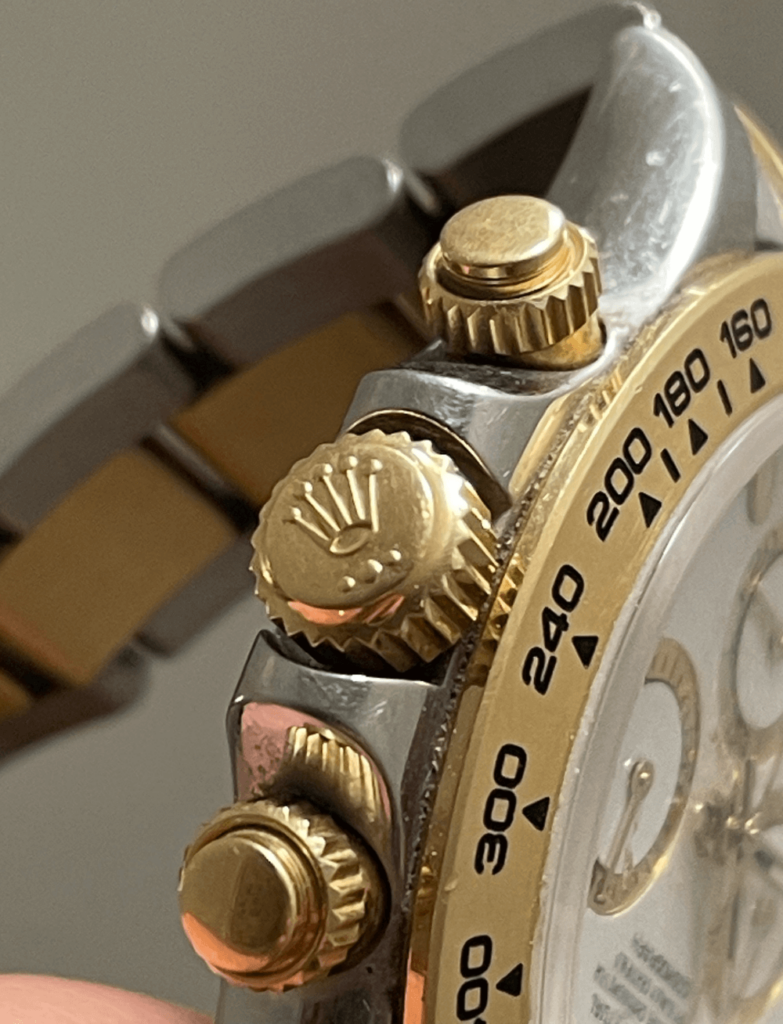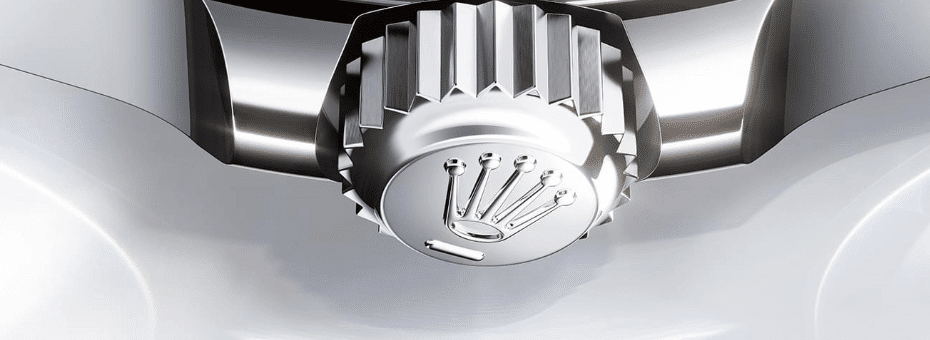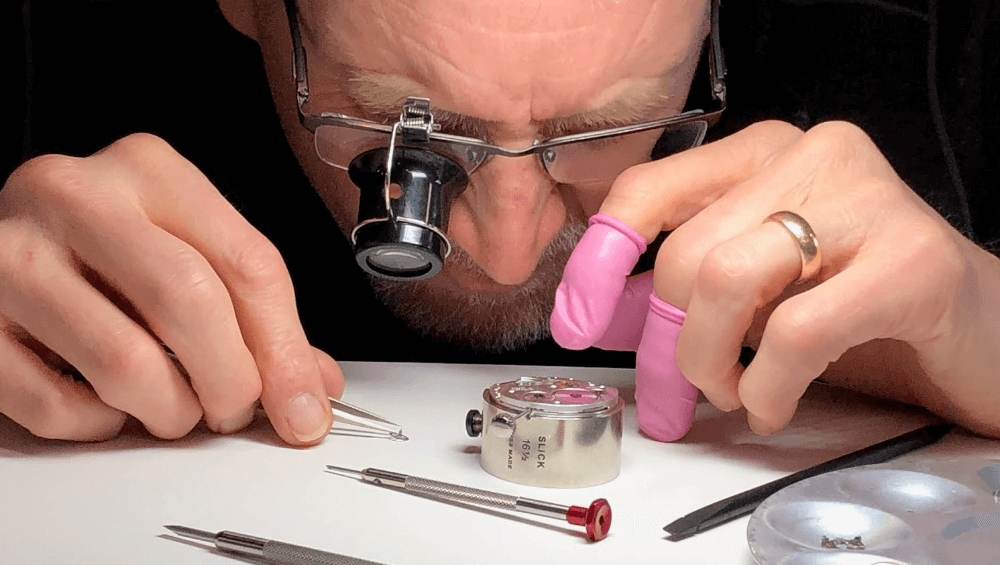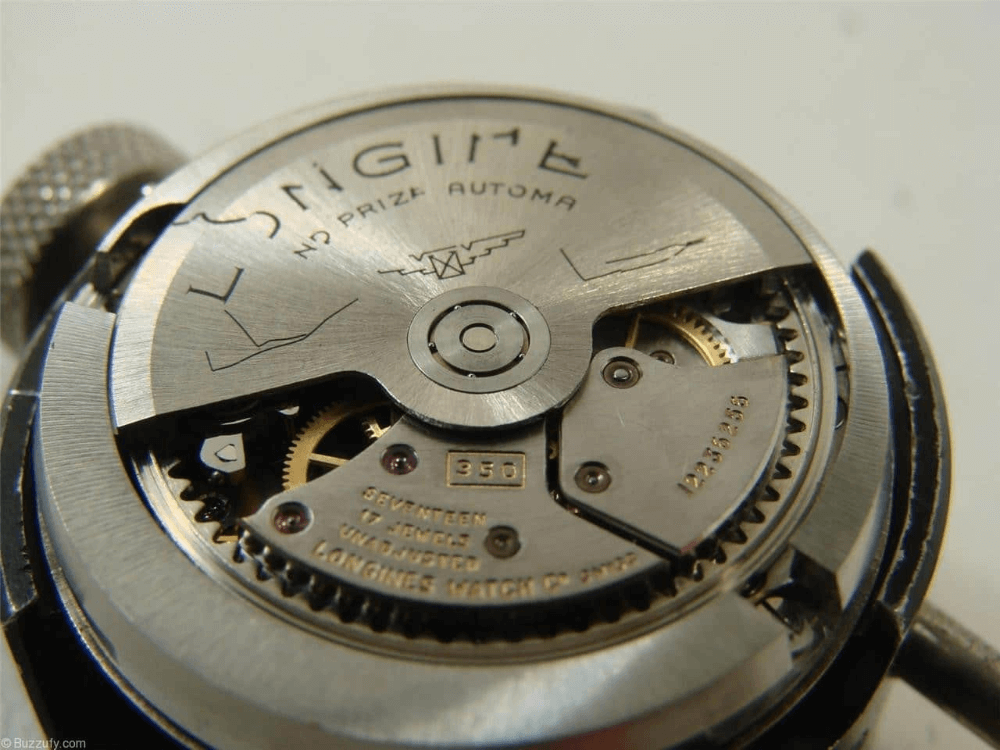📑 Table of Contents
In the world of luxury watches, the details make the masterpiece. Since its inception, Rolex has committed to maintaining and enhancing its timepieces’ precision, durability, and elegance. Introducing the crown guard in 1959 is a significant milestone among these enhancements.
Initially featured on iconic models like the Submariner and GMT-Master, this feature now graces most of Rolex’s Professional watches, offering a blend of practicality and subtle aesthetic enhancement.
This blog post delves into Rolex’s crown guard’s history, functionality, and significance, exploring how this seemingly minor detail encapsulates the brand’s commitment to excellence.
The Genesis of the Crown Guard
Rolex has always been synonymous with pioneering innovations in the watchmaking industry. The crown guard made its debut in 1959, a time when Rolex was cementing its reputation not just as a luxury watchmaker but as a creator of tools for professionals.
The introduction of the crown guard on the Submariner and GMT-Master responded to the needs of professional divers and aviators who required reliability and durability under challenging conditions.
The crown guard’s primary function is to protect the winding crown, which is essential for setting the time and date and, in some models, winding the watch itself.
Before its introduction, the crown was more vulnerable to impacts and potential damage from external elements, which could compromise the watch’s water resistance and inner mechanisms.
Iconic Models Featuring Crown Guards
The integration of crown guards into Rolex models has become a hallmark of their dedication to aesthetic appeal and functional excellence. Two iconic models featuring crown guards are the Rolex Submariner and the GMT-Master. Each timepiece demonstrates how Rolex has skillfully combined durability with distinctive design elements.
Rolex Submariner
- Introduced in 1953, crown guards were added in 1959.
- Guards protect during diving and enhance rugged appearance.
- Subtle design refinements maintain an iconic look.
Rolex GMT-Master
- Launched in 1955; added crown guards in 1959.
- Guards prevent accidental crown manipulation during flights.
- Robust build appeals to pilots and style seekers.
- Crown guards are integral to case design and enhance recognition.
Both models integrate crown guards for enhanced durability, usability, and distinctive style, reinforcing Rolex’s commitment to functional aesthetics.
Design and Functionality
Rolex’s design philosophy has always balanced aesthetics with practicality. The crown guard is crafted from the same metal block as the watch case, ensuring seamless integration and robust protection. Its discreet yet effective design protects the crown from impacts and unintentional manipulation.
The practical benefits of the crown guard extend beyond protection. It also enhances the watch’s water resistance by adding an extra layer of security to the crown’s sealing system. This is particularly important for divers’ watches like the Submariner, where even a small breach in water resistance can have disastrous consequences.
Beyond its immediate functional advantages, the crown guard also contributes significantly to Rolex watches’ overall aesthetic and brand identity. Its presence on models such as the Submariner or the Sea-Dweller gives these watches a distinctive, robust appearance that appeals to serious divers and casual wearers alike. This blend of form and function underscores Rolex’s dedication to high-quality craftsmanship and enhances the watch’s appeal in the luxury market.
Evolution and Impact
Since its introduction, the crown guard has become a staple feature of most Rolex Professional watches. Each iteration has seen refinements in design and functionality, ensuring that the crown guard not only meets but exceeds the expectations of professionals in various fields.
The presence of the crown guard has also contributed to defining Rolex watches’ visual identity. It contributes to the distinctive, rugged look often associated with Rolex Professional models, adding to their appeal as symbols of adventure and endurance.
Cultural and Market Impact
The crown guard is more than just a functional component; it symbolizes Rolex’s dedication to its wearers. Its design speaks to those who demand reliability in the most demanding conditions—deep underwater, high in the sky, or on the roughest terrains.
Moreover, the integration of the crown guard has bolstered Rolex’s reputation in the luxury watch market. It underscores the brand’s commitment to innovation, enhancing the user experience without sacrificing style. Collectors and enthusiasts often look for features that combine practicality with luxury, making Rolex’s Professional watches particularly coveted.

Conclusion
The Rolex crown guard is a testament to the brand’s innovative spirit and relentless pursuit of perfection. Introduced in 1959, it has become more than just a protective feature; it is a key element of the brand’s identity in the professional watch market.
As Rolex continues to innovate and lead in the watchmaking industry, the crown guard remains a reassuring, yet always inconspicuous, presence on the wrists of those who require the best in their timekeeping tools.
In the world of Rolex, every detail counts, and the crown guard defines an era of watchmaking excellence.






